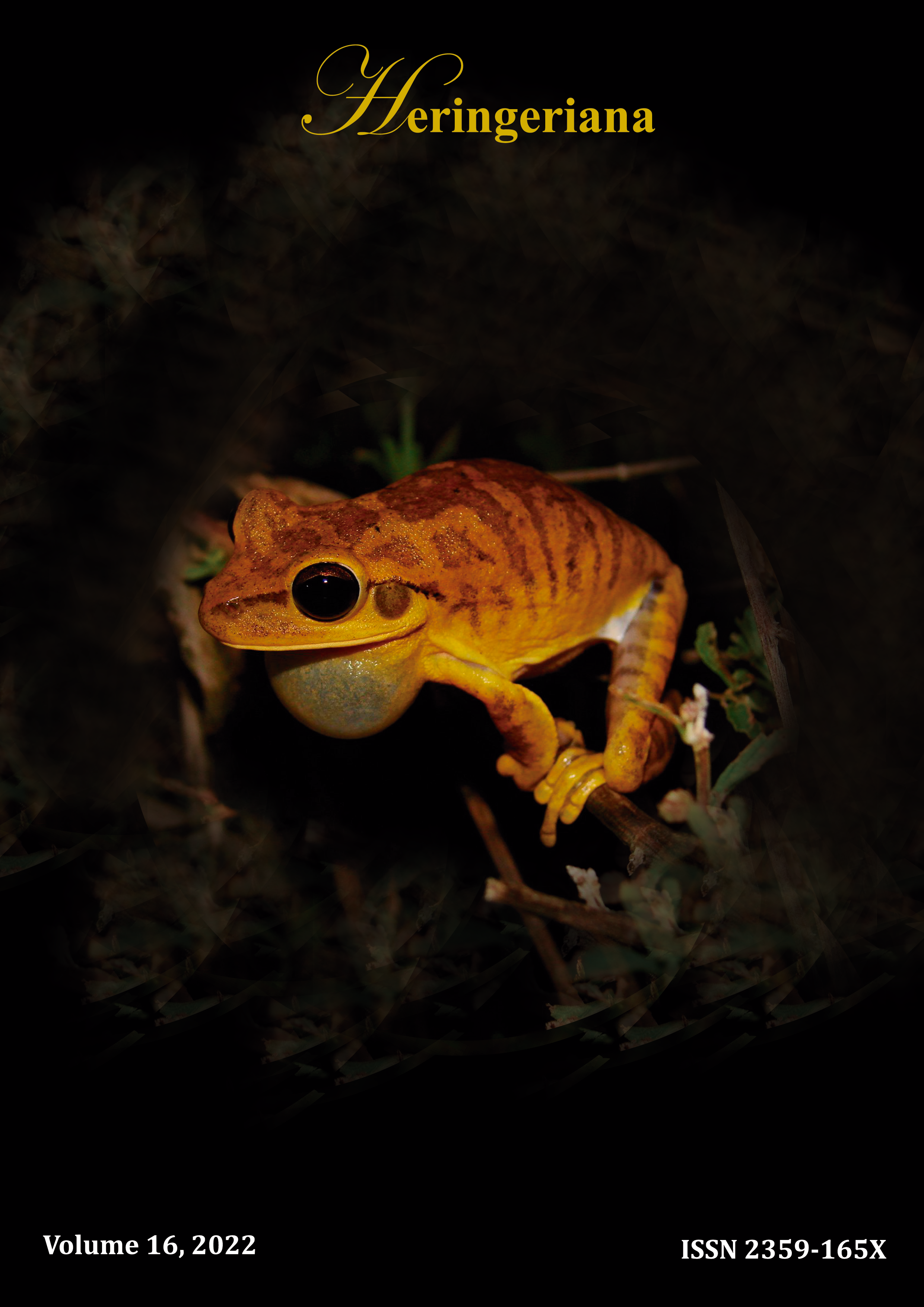First record of tail bifurcation in Colobosauroides cearensis (Squamata, Gymnophthalmidae)
DOI:
https://doi.org/10.17648/heringeriana.v16i1.917964References
Bateman, P.W. & Fleming, P. A. (2009). To cut a long tail short: a review of lizard caudal autotomy studies carried out over the last 20 years. Journal Zoology 277(1): 1-14.
Clause, A.R. & Capaldi, E.A. (2006). Caudal autotomy and regeneration in lizards. Journal of Experimental Zoology part A: Comparative Experimental Biology 305(12): 965-973.
Cunha, O.R., Lima-Verde, J.S. & Lima, A.C.M. (1991). Novo gênero e espécie de lagarto do estado do Ceara (Lacertilia: Teiidae). Boletim do Museu Paraense Emilio Goeldi Serie Zoologia 7(2): 163-176.
Dudek K. & Ekner-Grzyb A. (2014). Field observation of two-tailed sand lizard Lacerta agilis Linnaeus, 1758 and a common lizard Zootoca vivipara (Jacquin, 1787) in Poland. Natura Sloveniae 16(1): 65-66.
Henle, K. & Grimm-Seyfarth, A. (2020). Exceptional occurrences of double, triple and quintuple tails in an Australian lizard community, with a review of supernumerary tails in natural populations of reptiles. Salamandra 56(4): 373-391.
Meyer, V., Preest, M.R. & Lochetto, S.M. (2002). Physiology of original and regenerated lizard tails. Herpetologica 58(1): 75-86.
Passos, D.C., Pinheiros, L.T., Galdino, C.A.B. & Rocha, C.F.D. (2014). Tropidurus semitaeniatus (calango de lagedo) Tail bifurcation. Herpetological Review 45(1): 138.
Pheasey, H., Smith, P., Brouard, J.P. & Atkinson, K. (2014). Vanzosaura rubricauda (red-tailed vanzosaur) Bifurcation and trifurcation. Herpetological Review 45: 138-139.
Soares, M. & Caramaschi, U. (1998). Espécie nova de Colobosauroides Cunha, Lima-Verde and Lima, 1991 do estado da Bahia, Brasil (Squamata, Sauria, Gymnophthalmidae). Boletim do Museu Nacional, Série Zoologia 388: 1-8.
Downloads
Published
How to Cite
Issue
Section
License
Copyright (c) 2022 Tatiana Feitosa Quirino, Antônio Rafael Lima Ramos, Roberta da Rocha Braga

This work is licensed under a Creative Commons Attribution 4.0 International License.
By submitting, the authors declare that they have not submitted the work to another journal and agree to have their article published under a Creative Commons Attribution 4.0 International BY License (CC BY 4.0), which means that authors retain ownership of the copyright but anyone can use the published content provided the original authors and source are cited. The scientific, orthographic and grammatical content is the full responsibility of the authors.








